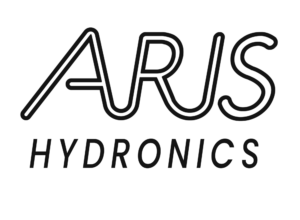
Announcing CalSEED Cohort 7: Powering California’s Clean Energy Future
We’re excited to present the seventh cohort of CalSEED Concept Awardees—early-stage innovators ready to help reshape California’s energy landscape. After a rigorous five-month selection process, CalSEED Cohort 7 was chosen from nearly 100 applicants, each bringing a unique approach to solving California’s biggest energy challenges. Each awardee will receive a $200K grant to develop their concepts.
Our mission was clear: identify clean energy technologies with the potential to benefit California’s electricity ratepayers and support the state’s ambitious energy and climate goals. To achieve this, we launched a comprehensive outreach campaign in March 2024, reaching innovators through virtual info sessions, webinars, and targeted social media while highlighting the journeys of past CalSEED awardees. This year’s focus centered on four essential technology areas:
- Battery Circularity – Innovations in recycling, reuse, and sourcing alternative materials for EV batteries.
- Long-Duration Energy Storage – Affordable, safe, and long-lasting solutions for energy storage during periods when wind and solar aren’t generated.
- Electrifying Medium- and Heavy-Duty Vehicles – Technologies that drive transportation electrification at a larger scale, replacing diesel trucks, buses, and other commercial vehicles with zero-emission electric models to reduce air pollution.
- End-Use Electrification – Advanced solutions to electrify industrial processes, EV charging, and next-generation heat pumps.
To ensure we selected the best, CalSEED employed a two-step application process. Applicants first submitted a preliminary application, and those meeting our eligibility requirements advanced to a full application stage. Of the initial 97 applications, only 28 met the rigorous screening criteria, including alignment with EPIC objectives, a California base, and a funding cap under $1 million. The most common reason for disqualification? Misalignment with our targeted technology areas, proving just how competitive this year’s cohort was.
A distinguished review committee of experts—from industry leaders to representatives from California’s top energy agencies—scored the full applications on Innovation, Social Impact & Energy Equity, and Team & Approach. After weeks of careful evaluation, the top-scoring innovations rose to the top, culminating in a final selection meeting in July.
CalSEED Cohort 7 Concept Awardees are pioneering technologies accelerating California’s journey toward a sustainable, zero-emission future. Each project promises to drive tangible benefits for California communities, creating jobs, improving energy equity, and addressing critical gaps in the clean energy landscape.
You can watch the California Energy Commission business meeting where the awards where approved and listen to the positive public comments about the importance and impact of this program.
So join us in welcoming the newest CalSEED companies shaping the future of energy in California!
CalSEED Cohort 7 Concept Awardees
1 17, Inc.
is building small, portable systems that use excess intermittent clean energy to produce green ammonia, a zero-carbon fuel. These systems can be placed right at the wind or solar power plants and the ammonia can be stored and transported. this technology will allow distributed, autonomously operated production units that can be turned off overnight to fit diurnal/intermittent clean energy without large batteries, extensive hydrogen storage, or grid power.
2 AmpTrans Inc.
is building IntelliCharge, a medium and heavy-duty electric fleet charging optimization platform. It will help manage the charging of large groups of electric trucks using artificial intelligence (AI) to balance when the trucks need charging with when the grid is busiest, using solar energy and battery storage to reduce energy costs. IntelliCharge will make charging easier and help reduce pollution by making electric trucks more efficient, while keeping the grid stable.
3 Aris Hydronics
is building a smart heating, cooling, and hot water system for multi-family buildings. The ARIS Thermal Plant Pod combines these functions into one system, using heat pumps, storage tanks, and controls to efficiently manage energy. It adjusts to each apartment’s needs, saving energy and money. The system is modular and easy to install, reducing the number of heat pumps needed.
4 Calectra
is building a thermal storage system with special heat-storing bricks that can reach super-high temperatures using electricity instead of burning fuels. The system will provide low cost, high-temperature (700-1600°C) process heat by achieving an 1800°C thermal storage temperature, maximizing the brick material lifetime, and using a simple, air-based heat transfer system. The heat stored in these bricks can be transferred to factories for making things like steel and cement.
5 Coulomb Technology, Inc.
is developing a zinc-ion based battery energy storage system to support medium- and heavy-duty vehicle charging stations. The zinc-ion batteries don’t catch fire like lithium-ion ones and can handle high power safely. The team is testing and improving the battery design to last longer, charge faster, and expects to provide energy storage at half the cost of lithium iron phosphate batteries while increasing the energy density by 50% over standard zinc-based battery chemistries.
6 Cryodrives, LLC
is building a heavy-duty variable frequency electric drive system that will replace a diesel engine in heavy duty truck/trailer applications. It will allow operators to check the trailer’s performance remotely and be strong enough for tough road use. This innovation has the potential to replace over 50,000 diesel pony-auxiliary motors on heavy duty trailers with reliable heavy duty electric drives to eliminate carbon, particulate, and NOx and SOx emissions.
7 EcoRecycleTech
is designing a new solid-state lithium-ion battery cell and pack that facilitates easy repair, repurposing, and automated disassembly of the pack and cell without shredding. By eliminating adhesives and preserving the electrode structure, this approach is expected to reduce production costs by 30% and slash greenhouse gas emissions by sixfold compared to traditional recycling methods.
8 Gridwave
is building modular solar-powered charging stations for electric medium- and heavy-duty vehicles. These stations are easy to set up, can connect to each other, and use smart technology to manage energy use. They include solar panels, batteries, and advanced controls to avoid overloading buildings or the electrical grid. The goal is to make charging stations that are affordable, reliable, and expandable as fleets grow, saving money on electrical upgrades.
9 KVA Technologies

is developing integrated thermal processing methods for additive manufacturing and welding of high performance alloys which can enhance material properties and uniformity. It uses electricity to only heat specific areas of a metal system needed to optimize mechanical and physical properties – significantly reducing the need for emission-heavy thermal processing resulting in less energy, emissions, time and costs during manufacturing and over a product’s lifecycle.
10 Manara Materials LLC

is developing a method to recover over 99% of high-purity nickel and vanadium from California’s spent catalyst oil refinery waste. It is a closed-loop solution to recover metals that are used to manufacture high energy density sodium-ion cathode material for energy storage applications. The recovery of these battery materials will also reduce costs associated with the disposal of hazardous material while securing a domestic supply of critical battery materials.
11 Navion Energy
is building an onsite rapid charging system using sodium batteries to deliver rapid, safe, and cost-effective charging for electric trucks. Most existing battery chargers are incompatible with deeply discharged sodium-ion cells, but this technology uses an innovative combination of a low voltage architecture and a specialized bidirectional DC-DC converter to bridge this gap. The system charges quickly without needing expensive cooling, making it a more affordable solution for Medium- and Heavy-Duty eelectric vehicle charging.
12 OpenRoad Technologies
is building a fast-charging battery system for EVs with special battery packs that can be installed using consumer-grade wiring. This way, places like apartment buildings or stores can offer fast EV charging without expensive upgrades, making fast charging availible in more places. The batteries also store power and will help reduce the cost of electricity.
13 Sol Robotics
is developing a wireless charging solution for autonomous fire threat detection electric vehicles (EVs) that operate along remote power lines. These EVs will identify vegetation overgrowth and maintenance issues that have triggered past devastating wildfires. This technology uses a novel low-frequency wireless inductive charger mounted on a compact retractable robot arm, and can harvest energy directly from the electromagnetic field generated by the power lines to recharge its battery.
14 SolGraph
is developing a unique structured graphite anode material for lithium-ion batteries that enables recovery at the end of battery life. The interconnected structure of the woven graphitic material is easily removed and recycled, is made using solar synthesis, reduces battery weight, and leads to high electrical and thermal conductivity, eliminating the need for a metallic current collector while keeping the battery cooler and improving battery life.
15 Three Rivers Power
is creating super-small, powerful battery systems that will eliminate the separate inverter, charger and battery management system (BMS) normally employed in energy storage systems. The size of a complete battery system will be at least 2-3 times smaller than competitive products and will enable new use cases such as ultra-compact utility pole-mounted battery storage units.
16 Wayside Energy
is building a battery pack made from a recyclable enclosure that simplifies construction and end-of-life material recovery. The design integrates three components – the battery enclosure, a non-flammable biodegradable fluid cooling system, and a mounting device – into a unibody composite structure to simplify the pack, which reduces weight and increases manufacturability.
17 We Think Global
is building a portable, IOT enabled, solar-powered system to that can recover, isolate, and purify a large range of metals and critical minerals from a variety of waste streams including mine tailings, industrial waste, brine, and other sources. The metals are purified on-site and sold through an virtual market (CIRCRIT ARCHIVE) accessible to technology manufacturers.
















